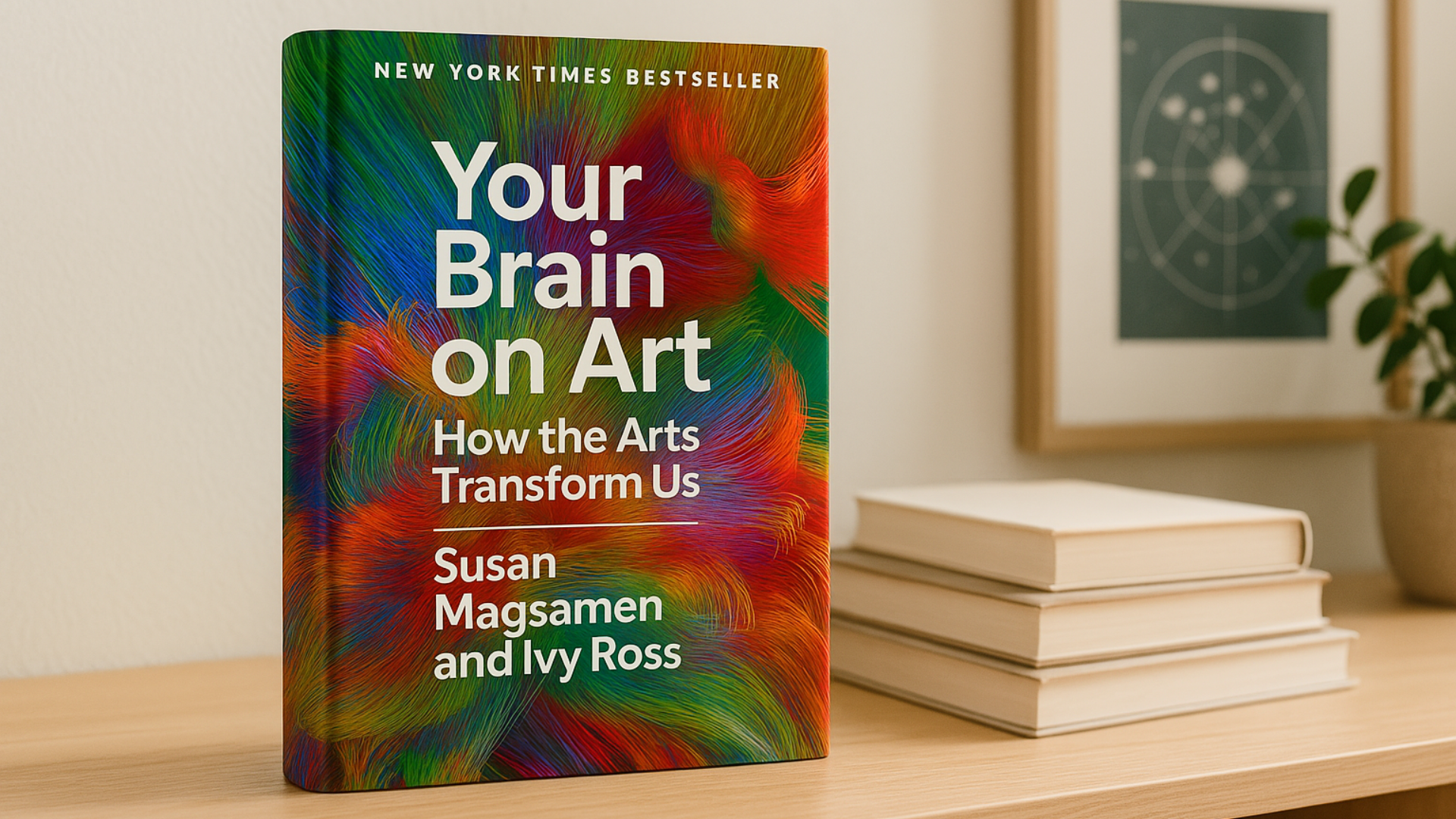Your Brain on Art: How Creativity Supports Mental Health and Healing

Book Review: Your Brain on Art by Susan Magsamen and Ivy Ross
How the arts heal, connect, and change us
There are books that change how you think. Then there are books that help you remember what you already knew, deep down. Your Brain on Art: How the Arts Transform Us falls into the second category. It doesn’t shout or dazzle. Instead, it offers a quiet, steady unfolding of something simple but powerful: creative experiences are not extras in our lives. They are essential to how we heal, grow, and connect.
Susan Magsamen and Ivy Ross bring together their backgrounds in neuroscience, design, and education to explore a growing field called neuroaesthetics. This area of research looks at how artistic and sensory experiences affect the brain and body. What they present is not just a case for art. It is a case for why creative expression, beauty, and emotion belong at the center of health and human flourishing.
This book will resonate with anyone who has ever wondered why music makes them cry, why painting calms their nerves, or why certain spaces feel more nurturing than others. It also speaks to people who used to enjoy creative things but feel far from them now, and to those who want to feel more present in their daily lives.
What the book promises
The authors set out to prove something that many people feel intuitively: that the arts are not a luxury. They are a biological necessity. The book introduces readers to the field of neuroaesthetics, explaining how sensory and aesthetic experiences shape our brain chemistry, influence our emotional well-being, and can even improve physical health.
The central promise is that small, intentional creative acts such as drawing, humming, or arranging a space can offer measurable benefits for both body and mind. This is not simply a poetic idea. It is backed by scientific findings that suggest art can support neurological function and emotional regulation.
What the book delivers
The book is structured around key themes such as mental health, learning, physical healing, and community. Each chapter presents research, personal stories, and practical examples. The authors introduce readers to veterans using art therapy for PTSD, parents singing to premature infants in NICUs, and educators redesigning classrooms with aesthetic awareness to support better learning outcomes.
Magsamen and Ross also offer the Aesthetic Mindset Index, a reflective tool that helps readers notice how much they engage with sensory and creative practices. It is not a test, but rather a thoughtful way to reconnect with a part of life that many adults overlook.
One of the most compelling aspects of the book is how readable it is. The writing is calm and warm, never preachy. The tone stays grounded throughout, offering information without pushing an agenda. The authors feel like guides rather than experts trying to impress. They meet the reader where they are.
Strengths and small limitations
The strongest element of this book is its clarity. The authors translate research findings into accessible language without diluting their meaning. Readers do not need a background in science or art to understand or apply the concepts.
Another strength is the wide range of stories, drawn from healthcare, education, design, and everyday life. These examples show how creativity appears in different forms and contexts. There is no pressure to perform. The emphasis is on noticing, responding, and reconnecting with a sense of aliveness.
If the book has a limitation, it is that some ideas begin to repeat, especially in later chapters. Readers moving through from start to finish may notice overlapping themes or examples. Still, this repetition reinforces the interconnected nature of the material. Like returning to a familiar song or image, the repetition creates rhythm and reinforcement.
Final thoughts
Your Brain on Art is both a scientific exploration and a gentle invitation. It invites readers to slow down, to pay attention, and to remember that we are all wired for beauty and expression. The authors do not ask you to become an artist. They ask you to become aware of the creative elements already in your life, such as the music that shifts your mood, the light and colour that influence your energy, and the way small movements can reconnect you with your body.
This book is especially relevant for people who are feeling overstretched, disconnected, or unsure how to access their creative side again. It will appeal to those carrying invisible loads, including professionals, caregivers, and educators. It offers something deeper than a wellness trend or a new productivity hack. It offers a way to come home to yourself through everyday aesthetic awareness.
The message is not to make more art. It is to live more artfully, even in small ways. That might be the most healing part of all.
Highly recommended for anyone interested in the connection between creativity and mental health, especially those looking for science-backed inspiration to bring more art, music, and movement into their daily life.